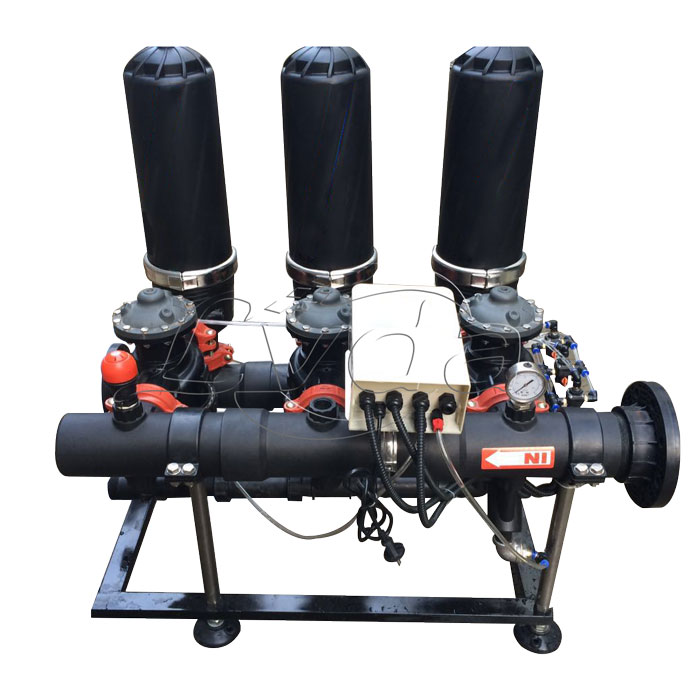A laminated filter is a device used to filter liquids, which is commonly used in agricultural irrigation systems.
In agricultural irrigation, a laminated filter is used to filter the water used for irrigation. It removes impurities from the water, including sediment, dirt, particulate matter and microorganisms, thus ensuring the quality of the irrigation water. This helps improve crop growth and yield, while also helping to protect farmland from grit, contaminants and disease.

Principle
A laminated filter usually consists of multiple layers of laminated sheets, each with a different particle size. As water flows through the filter, larger contaminants are held back on the surface of the lamellae, while smaller contaminants pass through the lamellae and are filtered out. The efficiency of the laminated filter can be controlled by adjusting the particle size and number of lamellae.
Applications
The laminated filter is used in a wide range of applications in agricultural irrigation, where it can be used to filter a variety of different water sources, including groundwater, river water and rainwater. It can also be used to filter a variety of different irrigation systems, including common sprinkler systems, drip irrigation systems and watering systems.
Precision Selection
Typically, stacked filters for agricultural irrigation have a filtration accuracy between 20 and 400 microns. If the irrigation water quality requirements are high, you can choose a lower filtration precision, such as 10-20 microns; if the irrigation water quality requirements are low, you can choose a higher filtration precision, such as 50~100 microns. In addition, the service life of the filter should also be taken into account, higher filtration accuracy may lead to a shortening of the filter service life. Other factors of the irrigation system, such as pipe material, flow rate, pressure, etc., should also be taken into account when selecting the filtration accuracy. In addition, regular inspection and maintenance should be carried out according to the actual situation in order to use the stacked filter for proper operation.
Other factors can also be considered, such as the material, size, and shape of the filter. For materials, there are generally choices of stainless steel, plastic and cast iron, etc. Stainless steel is corrosion resistant but more expensive, plastic is cheaper but less corrosion resistant, and cast iron is in between.
Attention
The filter should be checked and cleaned regularly to ensure that it can function properly. Attention should also be paid to the working pressure of the filter to make sure it is not too high or too low. In addition, the water quality should be checked regularly to ensure that the quality of the irrigation water meets the needs of the crops.
Customer Case
A customer from Indonesia sent an inquiry that he needed a filter for irrigation and stated that he needed a 20 micron precision and a DN50 inlet and outlet diameter.The customer received the filter and gave very satisfactory feedback.

